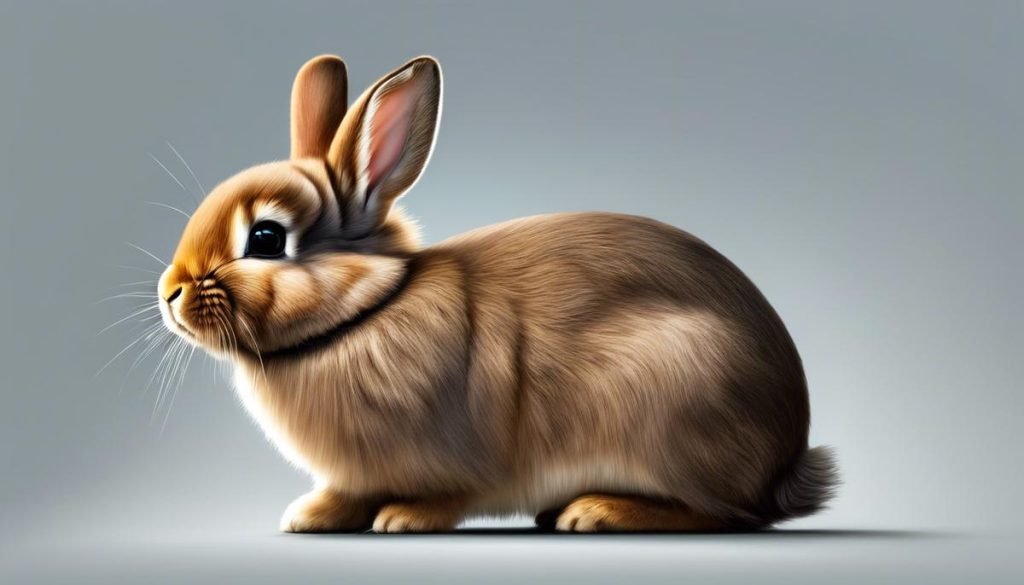Have you ever wondered about the best ways to hold your Netherland Dwarf Bunny or whether they even like being handled at all? This subject is of particular importance to potential and current bunny owners, as understanding their behavior can greatly enhance the bonding experience. Netherland Dwarf bunnies, known for their compact size and charming appearance, have unique behaviors derived from their distinctive genetic traits. Delve with us into the intriguing world of these delightful creatures. Through comprehensive exploration of their mood indicators, likes and dislikes, and responses to specific stimuli, we’ll shed light on the extent to which these bunnies enjoy being held and how to best approach this rewarding interaction.
Understanding Netherland Dwarf bunny’s behavior
Who can resist the charm of a Netherland Dwarf bunny? With their compact size, expressive eyes, and cute little twitchy noses, they’re an instant delight. But, just like us humans, they also have their unique ways of communicating and expressing their emotions. As a parent having the opportunity to foster one, it’s essential to understand these little fluffy creatures to ensure they’re comfortable and happy in your household.
Bunnies, especially the Netherland Dwarf variety, are far from being unsociable. They are just a little shy and reserved in the beginning, which is why they seem to be less expressive compared to dogs or even cats. However, don’t be fooled. These tiny furballs have a plethora of ways in expressing their contentment, distress, fear, or excitement. One such notable behavior is ‘binkying’. A ‘binky’ is a joyful jump for joy where the bunny will kick out its legs and twist its head and body in mid-air! This move is a clear sign of happiness and comfort.
Chinning is another behavior that your bunny may exhibit. When Exploring their surroundings, bunnies rub their chin on objects. This is not an act of scratching but a way of marking their territory with scent glands located under their chin. Stomping is another common behavior, and while it may seem cute, this is often a sign that your bunny is afraid or angry. They will stamp their strong hind legs as a distress signal or a warning of perceived danger.
In contrast, if you observe your bunny lying on their stomach with their hind legs stretched out, you can breathe out relief. This delightful pose, endearingly referred to as a ‘bunny flop,’ is an indication that your bunny feels completely secure and relaxed in their environment.
As nurturing a bunny requires understanding and patience, it’s vital to know these behaviors before taking them under your wing. The reward for doing so certainly makes it all worth it. When your Netherland Dwarf bunny feels secure enough to show their true personalities, it’s truly an experience filled with joy and entertainment.

Techniques to hold Netherland Dwarf bunnies and their reactions
Revel in the heartwarming sight of a contented Netherland Dwarf bunny nestled in your arms, using tried-and-true techniques. Remember, before reaching for that adorably cotton-ball fluff of a rabbit, the art of holding a bunny is all about relaxation and reassurance – for both you and your petite pet.
Firstly, establish trust with your bunny by spending quality time together, letting the nibbling niblet become accustomed to your scent and your touch. This makes the leap to actual holding less stressful. When you’re ready to hold your mini lagomorph, it’s essential to maintain a firm yet gentle grip. To ensure safety, always support their hind legs and avoid flipping them onto their back – a frightening position known as ‘trancing’. A dwarf bunny could react skittishly if not handled properly, so go slow and stay calm. This allows the bunny to relax and it avoids triggering any panic-induced kicks which may lead to a nasty spinal injury, a grave risk for these fragile creatures.
Familiarizing your fluffy friend with various members of your family and social surroundings is beneficial too, as it helps your bunny feel more secure when being handled. You might notice your Netherland Dwarf bunny expressing its unique temperaments and personality traits during this acclimatization period, like a soft grunt or whine when feeling bothered. So, do listen carefully for these sounds as they serve as insightful cues about your bunny’s comfort levels while being held. Once mastered, the bonding time you and your bunny enjoy will no doubt become one of the highlights of your day!

Discovering more about the behavioral characteristics and preferences of our Netherland Dwarf bunnies, especially regarding their handling, can deepen our connection with these endearing pets. Every detail matters; from understanding their individual ways of communicating to mastering the most comforting holding position for them. Essentially, appreciating and respecting their unique nature and needs underpin a successful bunny-human relationship. The information you have engaged with offers insider enlightenment that positions you, the pet owner, to potentially enhance your pet’s comfort and overall welfare, and indeed, your mutual bond. The signs are there, and with time and patience, your understanding will flourish as well as your relationships with these enchanting creatures.



